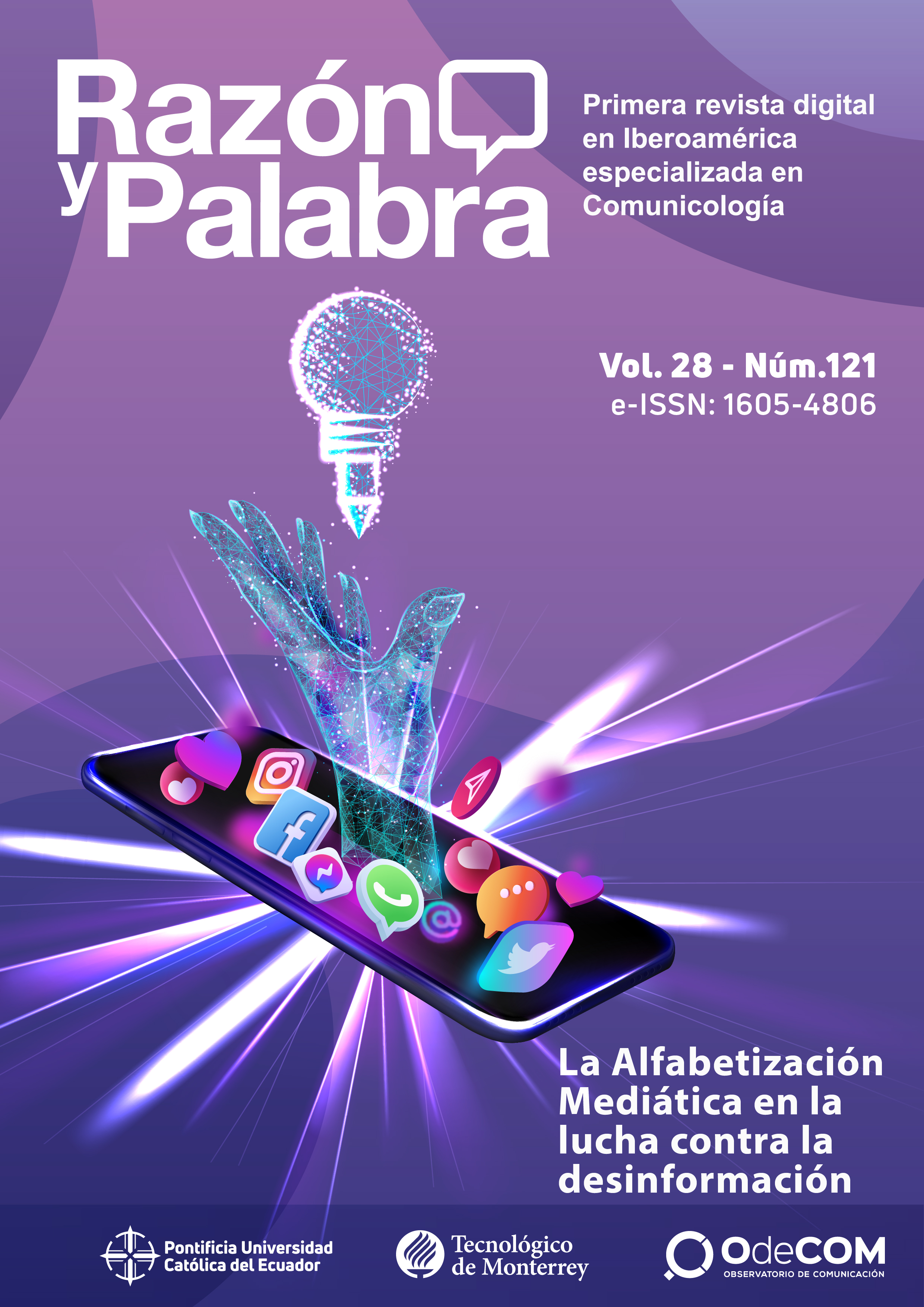Influencers virtuales: conceptualización, desafíos y oportunidades a través de una revisión sistemática de la literatura Virtual Influencers: conceptualisation, challenges and opportunities through a systematic literature review
Contenido principal del artículo
Resumen
Debido a la importancia que han adquirido en el panorama actual y a la inexistencia de revisiones sistemáticas de la literatura acerca de este fenómeno, el presente trabajo de investigación pretende reunir el conocimiento existente en la materia hasta el año 2024. Para lograr este cometido, se ha seguido la declaración PRISMA (2020). De esta forma, se han revisado un total de 72 artículos, con una aproximación cualitativa de 32 referencias, procedentes de Scopus y Web of Science. Así, del análisis de estos artículos científicos se ha podido aportar una definición unánime del concepto de influencer virtual, se ha propuesto un criterio de clasificación de los mismos y se han analizado aspectos relacionados con las interacciones entre las marcas y los influencers virtuales. Los resultados han sido claros: los influencers virtuales son una herramienta que ha llegado para quedarse y las marcas necesitan conocerlos en profundidad para maximizar su eficacia. Estos ofrecen claras ventajas frente a los influencers humanos: no sienten fatiga, no se ven envueltos en escándalos sociales, están disponibles a cualquier hora en cualquier lugar del mundo y las marcas pueden moldear su personalidad para adaptarla a la imagen que pretenden transmitir. Además, aúnan a estas la gran ventaja de los influencers humanos: la capacidad para crear lazos emocionales con el público.
Descargas
Detalles del artículo

Esta obra está bajo una licencia internacional Creative Commons Atribución-NoComercial-SinDerivadas 4.0.
Citas
Allal-Chérif, O.; Puertas, R. & Carracedo, P. (2024). Intelligent influencer marketing: how AI-powered virtual influencers outperform human influencer. Technological Forecasting and Social Change, 200, 123113. https://doi.org/10.1016/j.techfore.2023.123113.
Al Masri, Y.; Hamadneh S.; Al-Dmour R. y Al-Okaily M. (2023). Can Computer Virtual Influencers Replace Human Influencers in the future? An empirical investigation in the age of digital transformation. Jordan Journal of Business Administration, 19(4). https://doi.org/10.35516/jjba.v19i4.1430
De Brito Silva, M.J.; de Oliveira Ramos Delfino L.; Alves Cerqueira K. y de Oliveira Campos P. (2022). Avatar marketing: a study on the engagement and authenticity of virtual influencers on Instagram. Social Network Analysis and Mining, 12(1), 130. https://doi.org/10.1007/s13278-022-00966-w
Franke, C.; Groeppel-Klein, A. y Müller K. (2023). Consumers’ Responses to Virtual Influencers as Advertising Endorsers: Novel and Effective or Uncanny and Deceiving? Journal of Advertising, 52(4), 523–539. https://doi.org/10.1080/00913367.2022.2154721.
Kim, H. y Park, M. (2024). When digital celebrity talks to you: How human-like virtual influencers satisfy consumer's experience through social presence on social media endorsements,
Journal of Retailing and Consumer Services, 76, 103581. https://doi.org/10.1016/j.jretconser.2023.103581
Kim, H. y Park, M. (2023) Virtual influencers? attractiveness effect on purchase intention: A moderated mediation model of the Product-Endorser fit with the Brand, Computers in Human Behavior, 143, 107703. https://doi.org/10.1016/j.chb.2023.107703
Li, J. y Ma, Y. (2023). Virtual Influencers in Advertisements: Examining the Role of Authenticity and Identification. Journal of Interactive Advertising, 24(1), 1–12. https://doi.org/10.1080/15252019.2023.2270478
Monterola, C. Et al. (2013). Revisiones sistemáticas de literatura. Qué se debe saber acerca de ellas. Revista de cirugía española, 91(3), 149-155. https://www.elsevier.es/es-revista-cirugia-espanola-36-articulo-revisiones-sistematicas-literatura-que-se-S0009739X11003307
Ozdemir, O.; Kolfal, B.; Messinger, Paul R.; Rizvi, S. (2023) Human or virtual: How influencer type shapes brand attitudes, Computers in Human Behavior, 145, 107771. https://doi.org/10.1016/j.chb.2023.107771
Page, M. J., McKenzie, J. E., Bossuyt, P. M., Boutron, I., Hoffmann, T. C., Mulrow, C. D. y Alonso-Fernández, S. (2021). Declaración PRISMA 2020: una guía actualizada para la publicación de revisiones sistemáticas. Revista española de cardiología, 74(9), 790 799. https://doi.org/10.1136/bmj.n71
Park, S.; Wei, X. y Lee, H. (2023). Revisiting the elaboration likelihood model in the context of a virtual influencer: A comparison between high- and low-involvement products, Journal of Consumer Behaviour. https://doi.org/10.1002/cb.2290
Sands, S.; Ferraro, C.; Demsar, V. y Chandler, G. (2022). False idols: Unpacking the opportunities and challenges of falsity in the context of virtual influencers. Business Horizons, 65(6), 777-788. https://doi.org/10.1016/j.bushor.2022.08.002.
Statista. (2022). Consumers Who Bought a Product Promoted by Virtual Influencers U.S. 2022, by Age. https://www.statista.com/statistics/1304092/consumers-bought-product-promoted-virtual-influencers-age-group-us/
Suprawan, L. y Pojanavatee, S. (2022). What causes social media users to engage and mimic virtual influencers? The role of self-congruity. Innovative Marketing, 18(4), 148-160 https://doi.org/10.21511/im.18(4).2022.13.
Urrútia, G., & Bonfill, X. (2010). Declaración PRISMA: una propuesta para mejorar la publicación de revisiones sistemáticas y metaanálisis. Medicina clínica, 135(11), 507-511. https://doi.org/10.1016/j.medcli.2010.01.015
Xie-Carson L.; Benckendorff P. y Hughes K. (2023). Not so different after all? A netnographic exploration of user engagement with non-human influencers on social media. Journal of Business Research, 167, 114149. https://doi.org/10.1016/j.jbusres.2023.114149.
Yang, J.; Chuenterawong P.; Lee, H. y Chock, T.M. (2023). Anthropomorphism in CSR Endorsement: A Comparative Study on Humanlike vs. Cartoonlike Virtual Influencers’ Climate Change Messaging, Journal of Promotion Management, 29(5), 705-734. https://doi.org/10.1080/10496491.2022.216304.
Yu Y.; Kwong S.C.; Bannasilp A. (2023). Virtual idol marketing: Benefits, risks, and an integrated framework of the emerging marketing field. Heliyon, 9(11). https://doi.org/10.1016/j.heliyon.2023.e22164
Zhou, Q.; Li, B.; Li ,H. y Lei Y. (2024). Mere copycat? The effects of human versus human-like virtual influencers on brand endorsement effectiveness: A moderated serial-mediation model. Journal of Retailing and Consumer Services, 76, 103610. https://doi.org/10.1016/j.jretconser.2023.103610.







